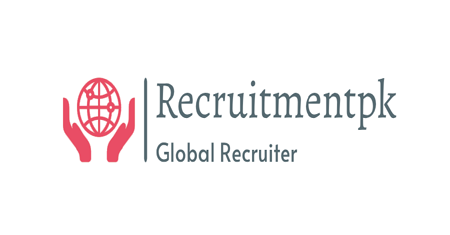The way we learn, work, and collaborate is undergoing a transformation unlike any other in history. In 2025, technology is no longer just a support tool—it’s the engine driving how organizations operate and how individuals build careers.
From AI-powered education platforms to remote collaboration in the metaverse, today’s tech trends are reshaping the global workforce. Whether you’re a student preparing for the future or a professional navigating workplace evolution, understanding these trends is crucial.
Here’s an in-depth look at the top tech trends that are transforming learning and work in 2025.
1. Artificial Intelligence is Becoming a Personal Mentor
AI is revolutionizing education and workplace productivity. In 2025, it’s no longer just automating tasks—it’s personalizing learning and decision-making.
Impact on Learning:
- Adaptive Learning Platforms: Tools like Coursera and LinkedIn Learning now leverage AI to customize learning paths for students and professionals based on their progress and skills gap.
- AI Tutors and Chatbots: Students can get instant feedback and solve problems in real-time, enhancing retention.
- Career Guidance: AI systems can analyze market trends and personal skills to recommend high-demand courses.
Impact on Work:
- Smart Virtual Assistants: They automate scheduling, data analysis, and report generation.
- Decision Intelligence: Companies use AI to predict market shifts, hiring needs, and risk management strategies.
- AI-Powered Recruiting: Recruitment platforms now screen resumes and assess candidates faster and more accurately.
Takeaway: AI is not replacing human intelligence, but enhancing learning efficiency and workplace decision-making.
2. Hybrid Work and Virtual Collaboration Are Here to Stay
The remote work revolution, accelerated by the COVID-19 pandemic, has matured into a hybrid work model by 2025.
Tech Transformations:
- Metaverse Meetings: Companies are adopting VR and AR for immersive meetings and virtual office setups.
- Digital Whiteboards & Collaboration Tools: Tools like Miro, Teams, and Slack now integrate AI to summarize meetings and assign tasks automatically.
- Employee Monitoring & Well-Being Tools: Analytics platforms track productivity, burnout risks, and engagement levels.
Impact on Learning:
- Virtual Classrooms: Students and professionals attend interactive sessions from anywhere in the world.
- Hands-On AR Simulations: Medical students can perform virtual surgeries, and engineers can assemble machines in VR labs.
Takeaway: Work and learning are now location-independent, supported by immersive collaboration technologies.
3. Microlearning and On-Demand Education Are Dominating
Gone are the days of long, one-size-fits-all courses. In 2025, professionals prefer bite-sized, skill-focused learning experiences.
Trends in Education:
- Skill-Based Learning: Companies focus on short, industry-relevant certifications instead of lengthy degrees.
- On-Demand Platforms: Apps like Udemy, MasterClass, and Skillshare allow workers to learn specific skills instantly.
- Gamified Learning: Microlearning modules are interactive and reward-driven, improving retention and motivation.
Workplace Application:
- Employees quickly upskill and reskill to stay relevant in AI, cybersecurity, cloud computing, and blockchain.
- Internal LMS (Learning Management Systems) help employers track and certify employee learning progress.
Takeaway: The workforce now learns continuously and efficiently, with education tailored to real-time industry needs.
4. Automation and Robotics Are Transforming Jobs
In 2025, automation and robotics are no longer futuristic—they are essential to business efficiency.
Workplace Changes:
- Robotic Process Automation (RPA) handles repetitive tasks like data entry, invoice processing, and HR documentation.
- Warehouse and Manufacturing Robotics boost productivity in logistics and supply chain management.
- AI-Powered Decision Support allows employees to focus on strategic and creative roles rather than routine tasks.
Impact on Learning:
- Technical Upskilling Is Mandatory: Workers need to learn how to operate, program, and maintain automation systems.
- Cross-Disciplinary Education: Schools and training programs now blend engineering, AI, and business skills to prepare students for robotics-integrated industries.
Takeaway: Automation is not just replacing jobs—it’s creating new opportunities for those who embrace reskilling.
5. Blockchain and Web3 Are Reshaping Credentials and Workflows
Blockchain technology, once confined to cryptocurrencies, is now transforming education and workplace operations.
In Education:
- Blockchain-Based Credentials: Degrees, certifications, and training completions are securely stored and instantly verifiable.
- Global Talent Recognition: Professionals can showcase blockchain-backed skills to employers worldwide, eliminating verification delays.
In Work:
- Smart Contracts in Freelance and Gig Work: Payments are automatically released upon task completion.
- Decentralized Collaboration: Teams collaborate on projects with secure, transparent workflows.
Takeaway: Web3 is eliminating barriers in hiring, credential verification, and project management.
6. VR, AR, and Immersive Learning Are Becoming Mainstream
Immersive technology is no longer limited to gaming—it’s transforming professional training and education.
- AR for On-the-Job Training: Workers in construction, healthcare, and aviation use AR headsets for guided instructions.
- VR Classrooms: Students participate in realistic, simulated environments for practical learning.
- Corporate Training Programs: Companies adopt VR to simulate complex scenarios, reducing training risks and costs.
Takeaway: Learning in 2025 is experiential and interactive, preparing professionals for real-world challenges faster.
7. Data-Driven Workplaces Are the New Standard
Organizations in 2025 rely heavily on data analytics for every decision.
In Learning:
- Learning Analytics Platforms track individual progress, weak spots, and course effectiveness.
- Personalized Curriculum: Students are guided toward high-demand skills based on real-time labor market data.
In Work:
- Predictive HR Analytics identify employee retention risks and productivity patterns.
- Performance Dashboards inform decision-makers on KPIs and trends instantly.
Takeaway: Both learning and work are now deeply data-driven, creating more precise, actionable outcomes.
8. Lifelong Learning is the New Career Strategy
In 2025, the half-life of professional skills has shortened dramatically. This means what you learn today may become outdated in just a few years.
- Upskilling Is Continuous: Professionals constantly acquire micro-certifications and industry updates.
- Cross-Skilling Is Valued: Employers prefer candidates who combine technical, digital, and soft skills.
- Learning and Work Are Interconnected: Companies integrate learning platforms into employee workflows to ensure real-time skill upgrades.
Takeaway: The future belongs to adaptive learners who see education as a lifelong journey, not a one-time event.
Final Thoughts
By 2025, technology has redefined both classrooms and workplaces. The key trends—AI, automation, blockchain, immersive learning, hybrid work, and microlearning—are shaping a world where adaptability is the most valuable skill.
To thrive in this era of transformation:
- Embrace continuous learning powered by AI and data.
- Adopt immersive and flexible work tools to remain competitive.
- Build tech fluency, because every industry is becoming a digital-first environment.
The boundary between learning and working is disappearing. Those who adapt to tech-driven change will lead the future of innovation, productivity, and career growth.

